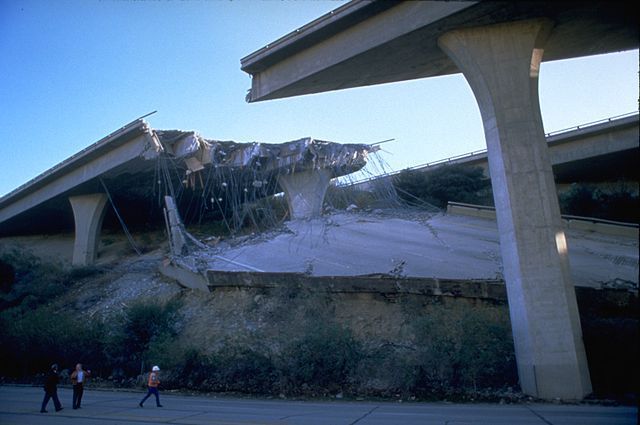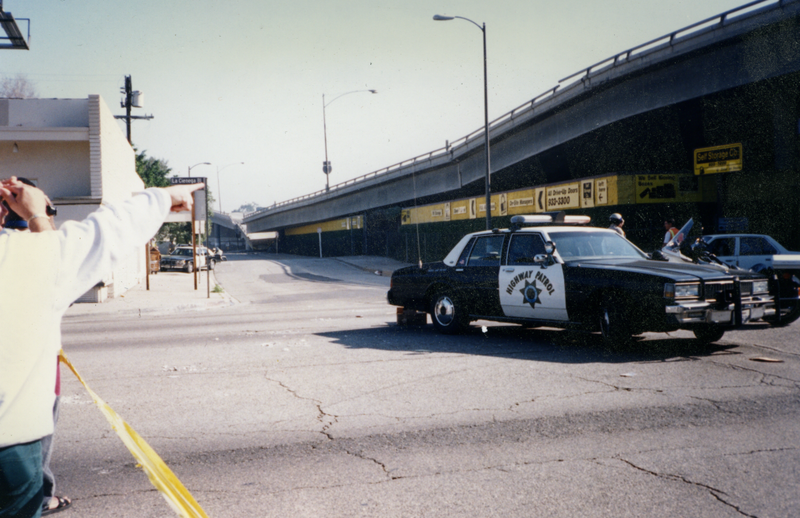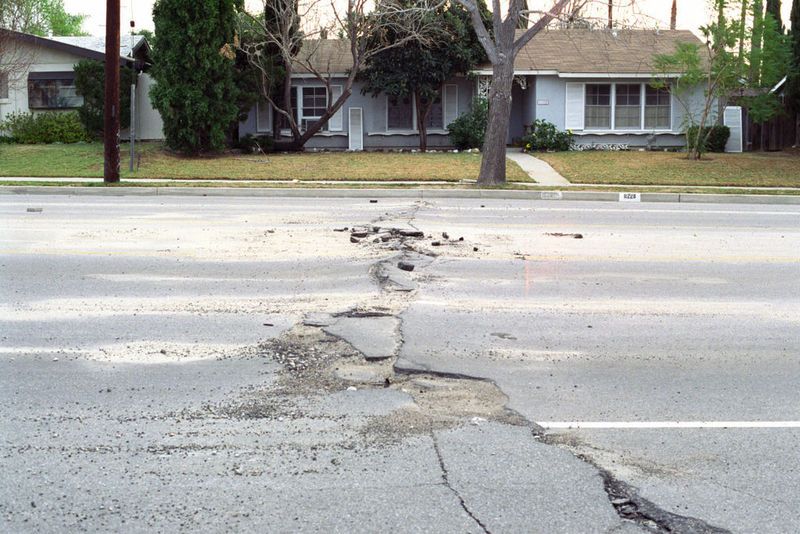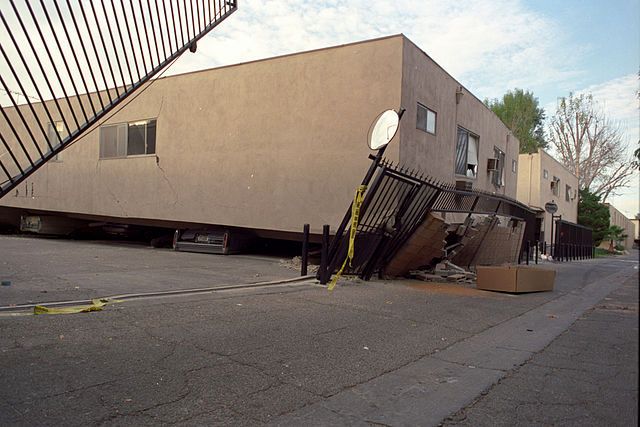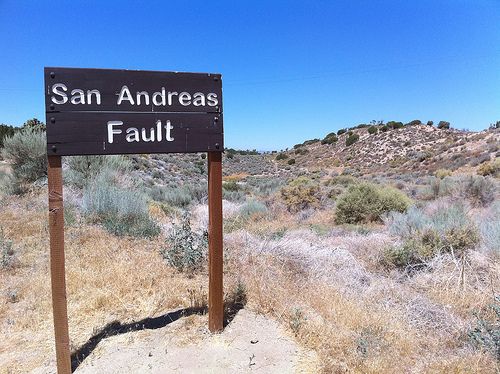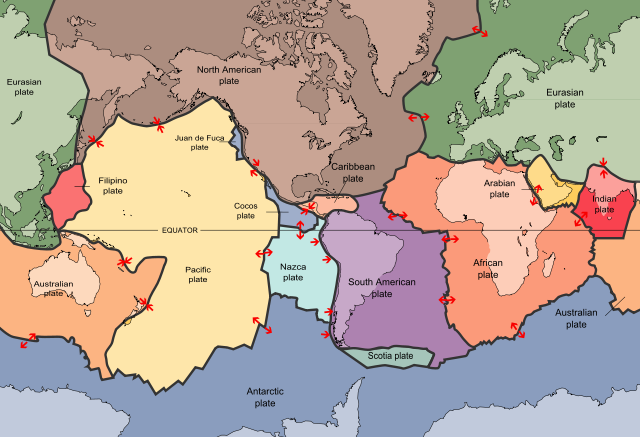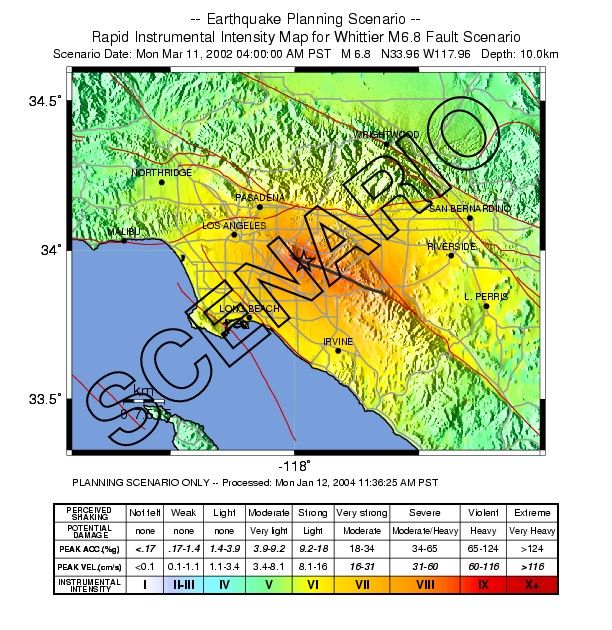FROM THE NOW GONE NBC BURBANK STUDIOS - Say the name David Horowitz to almost anybody who grew up in Southern California and the reply is often, "Oh, remember that when he was held up on Channel 4?"
Here is probably the most infamous, bizarre moment in Los Angeles television history when on 4:42 p.m. on August 20, 1987, a mentally disturbed man walked onto the KNBC-TV news set in Burbank during a live broadcast, held a gun to the back of Fight Back consumer reporter David Horowitz and ordered him to read a rambling statement.
The audio on this is not all that great, but here is a KNBC news report later that day on what happened on their news set.
The gunman was Gary Stollman, who was the son of former KNBC pharmacist reporter Max Stollman. Max Stollman had recently left KNBC some months earlier.
The four-page letter the gunman demanded Mr. Horowitz read began with, "The man who has appeared on KNBC for the last three years is not my biological father. "He is a clone, a double created by the Central Intelligence Agency and alien forces." It was at that point KNBC News Director Tom Capra ordered the station off-the-air.
When KNBC went off-the-air Stollman noticed the brightly colored "One Moment Please" card on one of the television monitors, and the anchors, John Beard and Kirstie Wilde, along with the camera operators and floor director, had to convince Stollman that KNBC was really on-the-air. The deception seemed to work.
During the ordeal it is amazing to watch Mr. Horowitz appear, well, acting completely relaxed and carrying on like a regular interviewer, despite the fact he had a gun to his back.
Looks can always be a bit deceiving as Mr. Horowitz told the Los Angeles Times in 1987, "The guy came up and put a gun in my back [and] my first reaction was, 'I can't believe this is happening.' "His first words to me were, 'Read this or I'll shoot you!' "People later told me how calm I looked, but believe me, I wasn't!"
"I kept thinking of my wife and kids," Mr. Horowitz said to the Times. "I didn't know if the guy was a terrorist or a whacko or somebody trying to get even for something. "My fear was that if any police came into the studio, and there was a marksman there and he fired at this guy, I might be caught in the cross-fire or this guy might pop a shot off and get me through the back of the head or whatever because I was not aware of the fact that this guy had a toy gun."
With a gun pointed to his back Mr. Horowitz told United Press International in 1987, "who the hell was going to rescue me?"
At the end of the saga when it is reveal the weapon was no more than an unloaded pellet gun Mr. Horowitz shrugs his shoulders and gives something that could be best described as a, "you've got to be freaking kidding me!" look as Stollman was thanking him for reading his statement that lasted seven minutes.
Just as Stollman put the toy gun down on the news desk co-anchor Mr. Beard quickly grabbed the fake weapon and Burbank Police rushed onto the set and promptly arrested Stollman.
Mr. Beard later told reporters he had never felt his heart beat as fast as he did that afternoon. Most disturbingly to Mr. Beard was, "if he (Mr. Horowitz) is shot how am I going to explain to people at home what just happened."
On a site called SkepticFiles.org Stollman has a rambling manifesto written in 1991 titled, The Invasion of the Human Race.
There, Stollman says in part,
I never planned out my life to wind up on the set of KNBC in Los Angeles LIVE, standing behind TV consumer advocate David Horowitz holding a toy gun to his head, demanding that he read a statement about how space aliens and the CIA had replaced my father and family with clones. I had only planned on becoming a computer programmer and a good citizen. At least that was before I discovered I had somehow stumbled onto a vast plot to overthrow the human race.
So just how did Stollman get past security? Ms. Wilde, co-anchor with Mr. Beard during the incident, told the Times Mr. Stollman simply exploited his father's former position with KNBC.
Ms. Wilde told the Times, "He scoped the studio out before. "He came last Thursday and called me to get in. "He said he was Max Stollman's son and he lives in the East and he never had the opportunity to see his dad while he was on our air and could he come down and watch. "I felt kind of bad because Max's contract was terminated and he hadn't had a chance to see him, so I said come on down."
The impression left on Mr. Wilde prior to the incident was Stollman, "seemed a little unstable, or maybe not very bright."
Since the incident Stollman has been in and out of mental facilities and continues to post conspiracy thoughts on message boards, as noted above.
After the incident Mr. Horowitz launched a state and later national campaign to outlaw toy guns that look a little too much like the real thing.
Mr. Horowitz remained with KNBC until August 1992 when management declined to renew his contract. Many in the industry believe his 20-plus years at the NBC owned-and-operated station came to a sudden end because funds were needed to pay Paul Moyer's unprecedented $8 million contract. Mr. Moyer had come to KNBC from KABC-TV in August 1992. In August and into fall of 1992, in addition to Mr. Horowitz, a few on-air and many behind the scenes employees were also let go from KNBC.
During his time at KNBC, aside from being a consumer advocate and hosting his famed Fight Back program, Mr. Horowitz was the first television reporter on-the-air following the 1971 Sylmar Earthquake. During that event he was broadcasting sitting on a stool in a darken parking lot. Later joining him during that early morning coverage was fellow KNBC reporter Tom Brokaw.
For a time David Horowitz returned to television in 1994-95 on KCBS-TV, joining Jerry Dunphy and Dr. George Fischbeck.

Today Mr. Horowitz is still fighting back for you by way of FightBack.com. Photograph used under a Creative Commons license.
Timely enough just a short time later on October 1, 1987, KNBC would once again be in the national spotlight for another bizarre on-air incident, and this time with David Letterman making fun of the incident, when Kent Shocknek and Christopher Nance went under the news desk for an extended period of time during an aftershock of the Whittier Narrows Earthquake. Mr. Shocknek, who retired from KCBS/KCAL-TV in 2014, has said many times over there was a genuine threat with heavy studio lights swinging precariously overhead. Nonetheless this incident created an awkward moment and is, much to Mr. Shocknek's dismay, perhaps the second most unusual event in local television that is highly remembered.
(Editor's Note: This story has been updated and reedited, but originally appeared in the now defunct Southern California News Wire in 2010, and it seems parts of this story has been plagiarized in some places around the Internet. So goes life on the Internet.)
Here is probably the most infamous, bizarre moment in Los Angeles television history when on 4:42 p.m. on August 20, 1987, a mentally disturbed man walked onto the KNBC-TV news set in Burbank during a live broadcast, held a gun to the back of Fight Back consumer reporter David Horowitz and ordered him to read a rambling statement.
The audio on this is not all that great, but here is a KNBC news report later that day on what happened on their news set.
The gunman was Gary Stollman, who was the son of former KNBC pharmacist reporter Max Stollman. Max Stollman had recently left KNBC some months earlier.
The four-page letter the gunman demanded Mr. Horowitz read began with, "The man who has appeared on KNBC for the last three years is not my biological father. "He is a clone, a double created by the Central Intelligence Agency and alien forces." It was at that point KNBC News Director Tom Capra ordered the station off-the-air.
When KNBC went off-the-air Stollman noticed the brightly colored "One Moment Please" card on one of the television monitors, and the anchors, John Beard and Kirstie Wilde, along with the camera operators and floor director, had to convince Stollman that KNBC was really on-the-air. The deception seemed to work.
During the ordeal it is amazing to watch Mr. Horowitz appear, well, acting completely relaxed and carrying on like a regular interviewer, despite the fact he had a gun to his back.
Looks can always be a bit deceiving as Mr. Horowitz told the Los Angeles Times in 1987, "The guy came up and put a gun in my back [and] my first reaction was, 'I can't believe this is happening.' "His first words to me were, 'Read this or I'll shoot you!' "People later told me how calm I looked, but believe me, I wasn't!"
"I kept thinking of my wife and kids," Mr. Horowitz said to the Times. "I didn't know if the guy was a terrorist or a whacko or somebody trying to get even for something. "My fear was that if any police came into the studio, and there was a marksman there and he fired at this guy, I might be caught in the cross-fire or this guy might pop a shot off and get me through the back of the head or whatever because I was not aware of the fact that this guy had a toy gun."
With a gun pointed to his back Mr. Horowitz told United Press International in 1987, "who the hell was going to rescue me?"
At the end of the saga when it is reveal the weapon was no more than an unloaded pellet gun Mr. Horowitz shrugs his shoulders and gives something that could be best described as a, "you've got to be freaking kidding me!" look as Stollman was thanking him for reading his statement that lasted seven minutes.
Just as Stollman put the toy gun down on the news desk co-anchor Mr. Beard quickly grabbed the fake weapon and Burbank Police rushed onto the set and promptly arrested Stollman.
Mr. Beard later told reporters he had never felt his heart beat as fast as he did that afternoon. Most disturbingly to Mr. Beard was, "if he (Mr. Horowitz) is shot how am I going to explain to people at home what just happened."
On a site called SkepticFiles.org Stollman has a rambling manifesto written in 1991 titled, The Invasion of the Human Race.
There, Stollman says in part,
I never planned out my life to wind up on the set of KNBC in Los Angeles LIVE, standing behind TV consumer advocate David Horowitz holding a toy gun to his head, demanding that he read a statement about how space aliens and the CIA had replaced my father and family with clones. I had only planned on becoming a computer programmer and a good citizen. At least that was before I discovered I had somehow stumbled onto a vast plot to overthrow the human race.
So just how did Stollman get past security? Ms. Wilde, co-anchor with Mr. Beard during the incident, told the Times Mr. Stollman simply exploited his father's former position with KNBC.
Ms. Wilde told the Times, "He scoped the studio out before. "He came last Thursday and called me to get in. "He said he was Max Stollman's son and he lives in the East and he never had the opportunity to see his dad while he was on our air and could he come down and watch. "I felt kind of bad because Max's contract was terminated and he hadn't had a chance to see him, so I said come on down."
The impression left on Mr. Wilde prior to the incident was Stollman, "seemed a little unstable, or maybe not very bright."
Since the incident Stollman has been in and out of mental facilities and continues to post conspiracy thoughts on message boards, as noted above.
After the incident Mr. Horowitz launched a state and later national campaign to outlaw toy guns that look a little too much like the real thing.
Mr. Horowitz remained with KNBC until August 1992 when management declined to renew his contract. Many in the industry believe his 20-plus years at the NBC owned-and-operated station came to a sudden end because funds were needed to pay Paul Moyer's unprecedented $8 million contract. Mr. Moyer had come to KNBC from KABC-TV in August 1992. In August and into fall of 1992, in addition to Mr. Horowitz, a few on-air and many behind the scenes employees were also let go from KNBC.
During his time at KNBC, aside from being a consumer advocate and hosting his famed Fight Back program, Mr. Horowitz was the first television reporter on-the-air following the 1971 Sylmar Earthquake. During that event he was broadcasting sitting on a stool in a darken parking lot. Later joining him during that early morning coverage was fellow KNBC reporter Tom Brokaw.
For a time David Horowitz returned to television in 1994-95 on KCBS-TV, joining Jerry Dunphy and Dr. George Fischbeck.

Today Mr. Horowitz is still fighting back for you by way of FightBack.com. Photograph used under a Creative Commons license.
Timely enough just a short time later on October 1, 1987, KNBC would once again be in the national spotlight for another bizarre on-air incident, and this time with David Letterman making fun of the incident, when Kent Shocknek and Christopher Nance went under the news desk for an extended period of time during an aftershock of the Whittier Narrows Earthquake. Mr. Shocknek, who retired from KCBS/KCAL-TV in 2014, has said many times over there was a genuine threat with heavy studio lights swinging precariously overhead. Nonetheless this incident created an awkward moment and is, much to Mr. Shocknek's dismay, perhaps the second most unusual event in local television that is highly remembered.
(Editor's Note: This story has been updated and reedited, but originally appeared in the now defunct Southern California News Wire in 2010, and it seems parts of this story has been plagiarized in some places around the Internet. So goes life on the Internet.)
